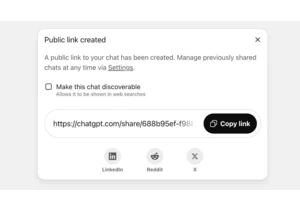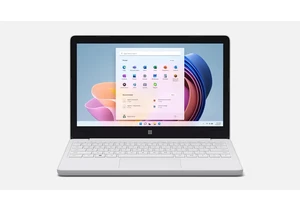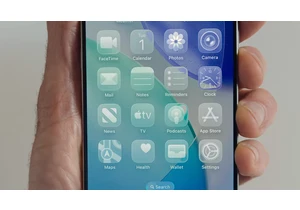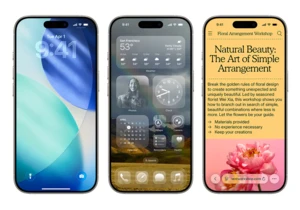Nothing did things differently with its third generation of phones. First came the midrange Nothing Phone 3a (and 3a Pro), which combined stylish hardware with a competitive price. Now, the company has launched the Nothing Phone 3, which it's calling its first "true flagship." At $799, it's Nothing's most expensive phone yet, featuring a bigger screen, four 50-megapixel cameras and a major redesign of the company’s signature Glyph interface, which has evolved into the more compact Glyph Matrix.
Nothing's hardware design is what truly sets its phones apart from the established players, and the 2025 model is more elaborate and complex than ever. At this price, however, it faces stiff competition from entry-level flagships like the Galaxy S25 and iPhone 16. Beyond the innovations and occasional gimmicks, has Nothing nailed the fundamentals enough to compete?
Hardware and design
Once again, Nothing has made a phone that commands attention like no other. Everywhere I go, people are curious when they see me using the Phone 3, and the Glyph Matrix seems to both confuse and delight them.
Unlike the protruding camera unit on the Nothing Phone 3a Pro, the Phone 3’s three cameras are separately lodged in the back and jut out a fraction of a millimeter. The see-through exterior returns, displaying screws and hardware modules organized into three vertical rows. This time, it’s more apparent that this is a design flourish rather than a genuine glimpse into the phone’s components. For example, a curious semi-circle of frosted glass beneath the flash doesn't seem to have a purpose (beyond an aesthetic one).
Elsewhere, a red square next to the ultrawide camera now acts as a recording light. It's another charming touch that can be disabled in the settings if you find it distracting. The off-center telephoto camera lens might also irk symmetry fans, but it's a choice that I don't particularly mind. The Phone 3 is 18 percent thinner than the Phone 2 and, without the camera bump of the 3a Pro, it looks and feels a step above its predecessors.
The main attraction is the Glyph Matrix: a circular dot-matrix display made of 489 LEDs that shows simple notifications, the time and battery level. While some loyal fans might miss the bold light show of previous models, this iteration is far more useful. Instead of a barrage of flashing lights, the Matrix can tell you who is calling through unique patterns and, with future updates, custom art assigned to your contacts.
Nothing continues to lean into its retro tech design inspiration, and I'll admit I'm a sucker for it. The dot-matrix text and numbers align perfectly with Nothing's Android skin, making the entire device feel cohesive. A capacitive haptic Glyph button beneath the Matrix lets you cycle through notifications and tools. Interactions are simple: a short press to switch modes or a long press to start tools like the stopwatch.
Fortunately, you can use the Phone 3’s settings menu to assign Glyph Matrix tools and "toys." Most of them are playful and frivolous, like Spin The Bottle and Magic 8 Ball, and Nothing is tapping into its community to create new Matrix widgets. Hopefully, functionality will expand as more users get involved. Some tools are less useful though, like a level that uses the phone’s accelerometer for a pixelated readout. It just seems a little imprecise; how much accuracy can you derive from less than 500 pixels? Others are quite slick, like a pixelated camera readout for framing selfies.
With Essential Notifications, you can assign specific app notifications or contacts to a unique pattern or a pixelated photo. However, it's challenging to create anything that doesn't look like a blurry mess. The same settings menu allows you to adjust the Matrix's brightness and how long the notifications persist.
The front of the Phone 3 is all display, with a 6.67-inch screen and a resolution of 2,800 x 1,260. If you prefer a large screen, this is probably its biggest advantage over the iPhone 16 and Galaxy S25. It’s also Nothing’s brightest phone yet, reaching up to 4,500 nits for HDR content — noticeably brighter than the Nothing Phone 3a. It supports HDR 10+ and a 120Hz refresh rate, all protected by Gorilla Glass 7.
Cameras
Nothing has the fundamentals covered with the Phone 3’s cameras. The triple-camera system includes a 50-megapixel f/1.7 main sensor with optical image stabilization, a 50MP ultrawide and a new 50MP telephoto camera with 3x optical zoom.
As we noted in our Nothing Phone 3a review, telephoto cameras are rare on more affordable smartphones. On the Phone 3, there’s a periscope zoom, keeping the camera unit svelte and barely protruding from the device. It’s also impressive to see a 3x zoom paired with a high-resolution 50-megapixel sensor, which allows you to crop into images while retaining fidelity. Nothing even added a 6x zoom button in the camera app that crops the image further. The app also uses pixel-binning for more accurate color and better low-light pictures by default, which results in them being saved as 12-megapixel images.
Overall, the camera system can be a little inconsistent. During a vacation in Amsterdam, the Phone 3 captured crisp images of wildlife and architecture. Its Action mode was particularly impressive, effortlessly adding motion blur to shots while keeping the subject sharp. However, at other times, what should have been vibrant cityscape shots and street art came out muted and grainy. For example, psychedelic cat artwork that was incredibly vibrant in person looked flat in the photos. The metadata revealed the phone had cranked up the ISO, a setting I haven't had to manually adjust on a smartphone in years.While some color variation between the three lenses is expected, images often looked as if they were taken on different phones, something that was especially evident in scenes with blue skies.
The telephoto camera is the standout feature on the Phone 3. I love the ability to play with zoom, and the 3x optical zoom (plus the additional crop) makes this a more useful camera than those on the iPhone 16 or Pixel 9, which top out at 2x zoom. It’s also an excellent macro camera, using the zoom to prevent the phone from casting a shadow on the subject.
Software
Nothing once again outfits its phone with its own distinctive Android skin. The aesthetic is all monochrome, serif fonts and dot-matrix touches. I immediately chose this skin when setting up the phone for the first time, though finding some app icons can be more challenging without their original colors.
Essential Space, with its dedicated hardware button, remains Nothing’s most interesting software addition. Since launching on the Nothing Phone 3a, it can now add events to your Google Calendar, remind you of tasks and summarize audio recordings. My biggest issue, however, is accidentally hitting the power button instead of the Essential Key, or vice versa. The keys need to be a different size or at least have a more distinct feel.
Performance and battery life
With a Qualcomm Snapdragon 8s Gen 4 processor, the Phone 3 performs solidly, but it’s not as snappy as a device with true flagship silicon, like the Snapdragon 8 Elite or Apple A18. Some might argue that the Phone 3 isn't a "true flagship" because its processor can be found in sub-$400 devices, but the chip is still powerful enough for most tasks and games, and can even deliver ray-traced graphics.
Nothing opted for a 5,150mAh silicon-carbon battery, making it one of the first phones we’ve tested with this new technology. It can store more lithium ions than traditional lithium-ion batteries, which Nothing claims adds a 10 percent boost in energy density compared to its predecessor. I didn’t feel any notable difference of the Phone 3 running cooler, however. In our battery rundown test, the Phone 3 was able to play a video file for just over 23 hours. That falls slightly shy of the Phone 2, but that has a smaller screen.
The Phone 3 also gets flagship-level charging speeds, supporting 65W wired charging that gets the device from empty to full in under an hour (with a compatible charger). It also supports 15W wireless charging and reverse wireless charging for earbuds. However, the lack of Qi2 support seems like an oversight for a "true flagship."
Wrap-up
How does Nothing’s flagship phone stack up against similarly priced smartphones? The Phone 3 offers a big 6.67-inch screen, a large battery with fast charging and 256GB of storage — double the amount found in the base Pixel 9 and Galaxy S25.
However, a less-than-flagship chipset and inconsistent camera performance detract from the appeal of an otherwise intriguing phone with slick software and a unique design. The Glyph Matrix is much more useful than the flashing lights of the Phone 3’s predecessors, even if the design isn’t quite as bold. I just hope the company continues to evolve the tools available on it.
The Phone 3 is a much better phone than the two-year-old Nothing Phone 2, but it's also $200 more expensive, making any shortcomings more apparent. While I want Nothing to continue experimenting with its phones, it should probably prioritize shoring up the camera performance first.
This article originally appeared on Engadget at https://www.engadget.com/mobile/smartphones/nothing-phone-3-review-143006151.html?src=rss https://www.engadget.com/mobile/smartphones/nothing-phone-3-review-143006151.html?src=rssChcete-li přidat komentář, přihlaste se
Ostatní příspěvky v této skupině



OpenAI has removed a feature that made shared ChatGPT conversations appear in search results. The "short-lived experiment" was based on the chatbot's link creation option. After complaints, OpenAI'

Microsoft is ending support for its ChromeOS competitor Windows 11 SE. The company will officially stop providing "software updates, technical assistance and security fixes" in October 2026, accord



